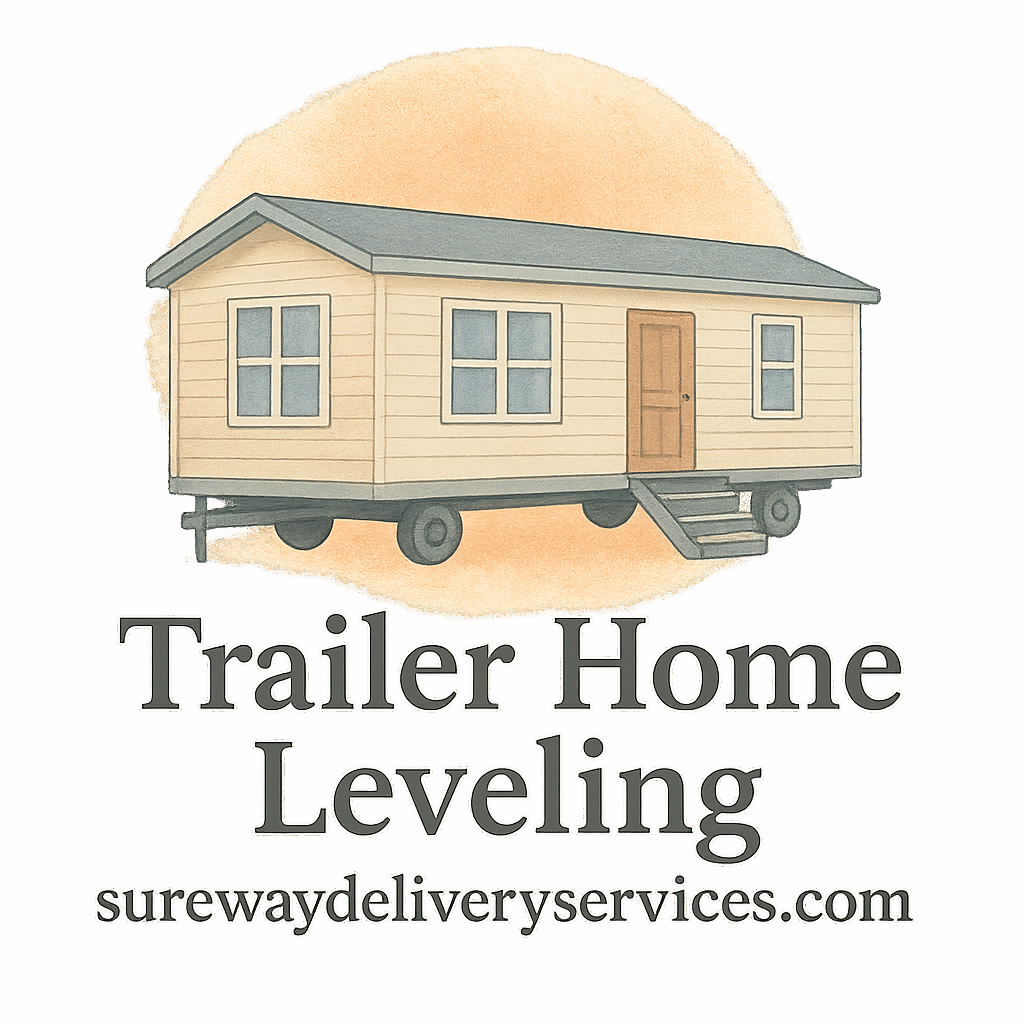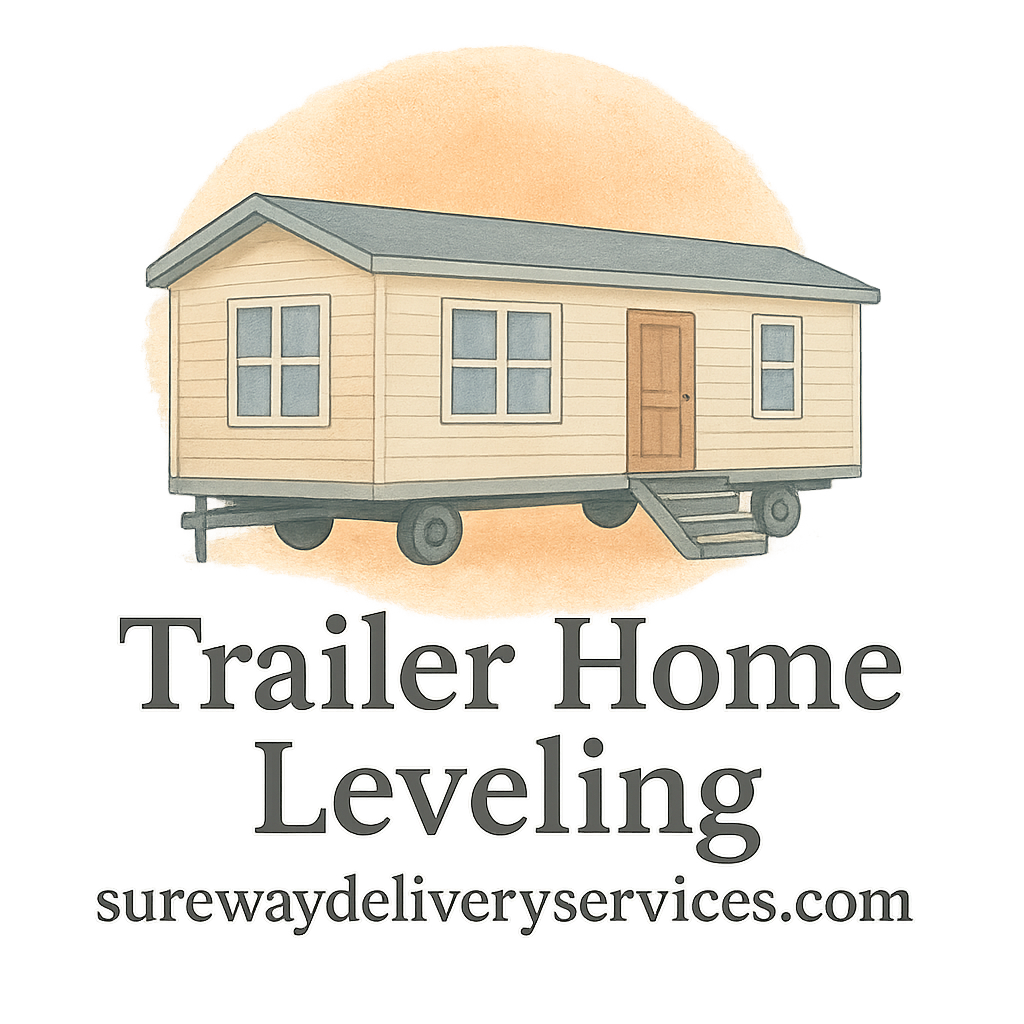Introduction
Is your trailer floor sloping to one side? Doors not closing right? Your single-wide trailer home probably needs leveling. It’s a crucial part of keeping your home safe, functional, and damage-free. In this detailed guide, we’ll walk you through exactly how to do it – step by step.
Why Trailer Home Leveling Is So Important
Structural Stability
Leveling a trailer ensures the weight is evenly distributed. Without this, you risk putting stress on walls, floors, and joints – which could lead to cracks or even collapse over time.
Preventing Long-Term Damage
An unlevel trailer can cause plumbing problems, roof leaks, and structural weakening. Proper leveling saves you expensive repairs later. For more insights, check out our Basics Introduction.
Comfort and Functionality
When your trailer is level, doors latch properly, cabinets stay closed, and your appliances work as intended. It just makes daily life easier and more comfortable.
Tools and Equipment You’ll Need
Basic Tools Checklist
Here’s a list of essentials:
- Water or laser level
- Hydraulic bottle jacks
- Concrete blocks or steel piers
- Pressure-treated wood shims
- Measuring tape
- Screwdrivers and wrenches
Explore our Techniques and Methods page for more tool-related info.
Safety Gear Essentials
- Heavy-duty gloves
- Eye protection
- Steel-toe boots
- Hard hat
Safety is your best friend when working under a trailer.
Safety First: Prep Before You Start
Shut Off Utilities
Turn off electricity, water, and gas before lifting the trailer. It prevents accidents and ensures your safety.
Clear the Area
Remove skirting and any debris around the trailer. Make sure you have plenty of room to work.
Step 1: Inspect the Current Level
Use a Water or Laser Level
Go room to room, checking floors and baseboards. A water level or laser tool will help you see how much off-balance your trailer is.
Step 2: Identify the Low and High Points
Mark where the trailer dips or rises. This gives you a map of what needs adjustment. Tip: Note each corner’s measurements in a notebook.
Step 3: Lift the Trailer Using Hydraulic Jacks
Proper Jack Placement
Always place jacks on solid ground, preferably on concrete pads. Position them under the steel frame, not the floor.
Lifting Safely
Lift slowly and evenly. Don’t rush it. Go corner by corner until everything aligns based on your level readings.

Step 4: Insert Concrete Blocks or Piers
Types of Blocking Material
Use CMUs (concrete masonry units) or adjustable steel piers. Stack in a crisscross pattern and insert shims on top for snug support.
Pro Tip: Avoid wood-only blocks – they degrade quickly and lead to instability. Visit our Cost & Budgeting page to learn more about materials.
Step 5: Adjust and Level
Fine-Tuning Your Measurements
Use your level tool again. Make micro-adjustments with your jacks or shims to ensure a balanced layout.
For DIY lovers, check our Trailer Tips section for pro hacks!
Step 6: Secure the Trailer
Anchoring and Stabilization
Once the trailer is level, install hurricane anchors or tie-downs. These add security, especially in windy areas.
Need help choosing a service? Visit our Service Hiring guide.
Step 7: Reconnect Utilities and Check Functionality
Test Everything!
Turn utilities back on. Check plumbing, electrical, and appliances. Walk through your home and verify that everything works as it should.
If issues persist, schedule a visit with a pro. Read Customer Reviews to find trusted services.
Step 8: Schedule Regular Maintenance Checks
Annual Inspections
Even a perfectly leveled trailer can shift over time. Conduct annual checks using our Checklist to catch issues early.
Visit our Maintenance & Inspection hub for best practices.
Conclusion
Leveling your single-wide trailer might sound like a big task, but it’s totally doable – especially when you follow these 8 steps. It’s all about safety, precision, and regular upkeep. A level home is a happy home. And hey, doing it yourself can be pretty rewarding too!
Want to keep your trailer in top shape? Browse our Trailer Maintenance resources.
FAQs
1. How often should I level my single-wide trailer?
Ideally, check the level annually or after extreme weather.
2. Can I level my trailer without jacks?
Not safely. Jacks are crucial for lifting and adjusting safely.
3. What are the signs that my trailer needs leveling?
Uneven floors, stuck doors, and cabinet gaps are common red flags. More Signs.
4. How much does it cost to level a trailer home?
DIY costs can range from $300–$700. Get budgeting tips here.
5. Should I hire a professional to level my trailer?
If you’re unsure, yes. Check our Service Package guide.
6. What tools do I absolutely need?
At minimum: a level, jacks, blocks, and safety gear. Explore more Tools.
7. What’s the difference between single-wide and double-wide leveling?
Double-wides have more support points and require more time and precision. Learn more in our Trailer Details archive.


